Affiliate disclosure: This post may contain affiliate links. Please see our Privacy Policy.
Growing saffron is surprisingly easy, and saffron readily grows in zones 6 and above without issue. With a bit of care and attention, you can also learn how to grow saffron in zones 3-5 as well!

The spice saffron comes from the red thread-like stigmas of the saffron crocus (Crocus sativus). Each flower only produces a few tiny threads, which when dried weigh almost nothing. Those tiny threads are incredibly flavorful, and there’s a reason that saffron is the world’s most expensive spice.
It takes about 150 flowers to yield just a single gram of dried saffron, and a whole field may only produce a pound or two in a season. Now you understand how the bright red stigmas of this tiny purple flower can sell for as much as $10,000 per pound…
The thing is, no one really needs a pound of saffron. Recipes are flavored with a few threads or a tiny pinch of this powerful spice.
Growing saffron at home is incredibly satisfying, and all you need is a small patch to supply your family with the freshest, most flavorful saffron imaginable.
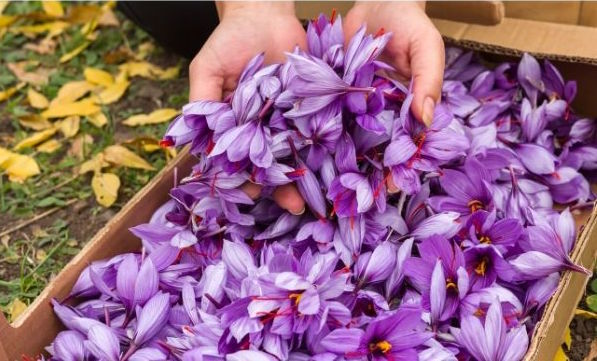
Where to Buy Saffron Bulbs
It’s important to note that saffron crocus is not the regular spring-blooming crocus. You need a special variety, known as Crocus sativus. You cannot just harvest parts of normal spring-blooming crocus or even parts of just any old autumn crocus.
Saffron crocus is a specific strain, and you should not consume any of the others.
Some nursery centers carry saffron bulbs, but we’ve ordered them in the past from both Fedco seeds and Renee’s Garden Seeds. They’re also incredibly inexpensive on amazon.
How to Grow Saffron
Unlike common spring crocus flowers, Saffron crocus are fall blooming. The plants are native to a Mediterranean climate, and they go dormant during the summer to survive dry arid conditions. The bulbs sprout greenery in the early fall, before putting on a showy display of late fall purple flowers.
A summer dormancy period means that the bulbs are usually dug at producers in mid-summer, and shipped for late summer planting. I received my saffron bulbs in late summer and planted them on September 1st.
Early September is a little late here in Vermont, where the autumn season is often cut short by early snow, but it was still plenty of time to harvest some homegrown saffron.
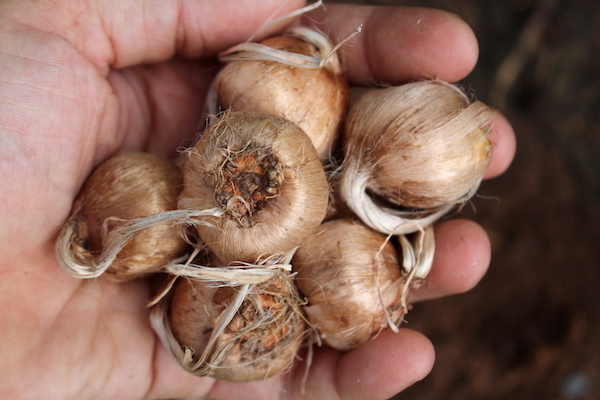
Start by planting the saffron bulbs in sandy, well-drained soil that’s moderately rich in organic material. Our soils are clay-filled and wet, so I built a raised bed for growing saffron. The soil is made up of sand (harvested from the edge of our pond), combined with compost and a bit of peat moss.
The saffron thrived in that light growing medium.
Plant saffron bulbs 3-4 inches deep, and 3-4 inches apart. The deep depth is important, as the bulbs will multiply by growing new bulbs above the old ones. If they’re planted to shallow there won’t be enough space for next year’s bulb to develop.
A few weeks after planting, the first thin grassy foliage will appear….
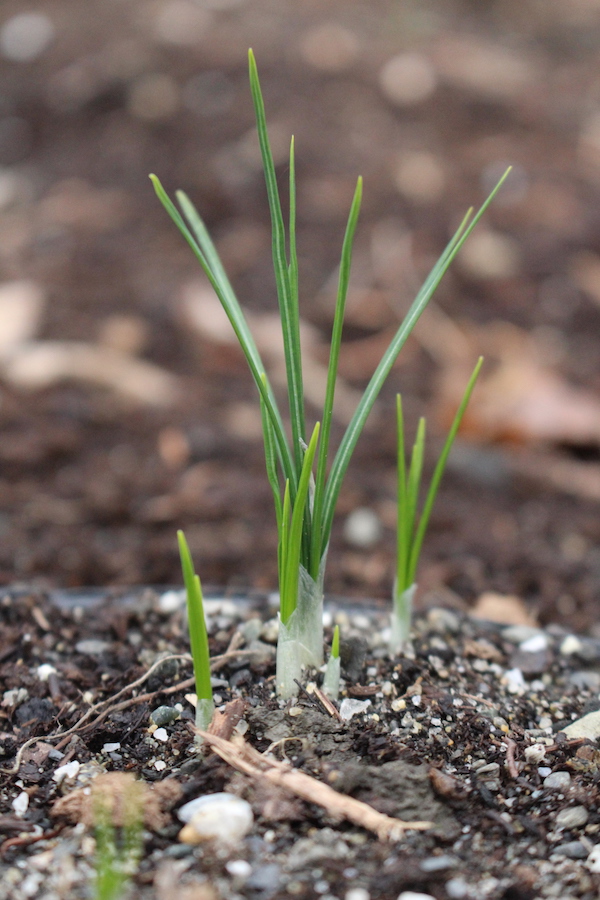
After the foliage is established, the saffron crocus bulbs will send up numerous pale purple flowers. It’s kind of impressive how many flowers a single bulb can put out in a year, and even though they’re planted quite a ways apart, each bulb will put out a big cluster of saffron flowers.
It takes 5-8 weeks from planting for the first flowers to appear, but once they get started the flowers keep coming steadily for about 3 weeks. The prolific nature of the bulbs is important since each one only produces a few saffron threads.
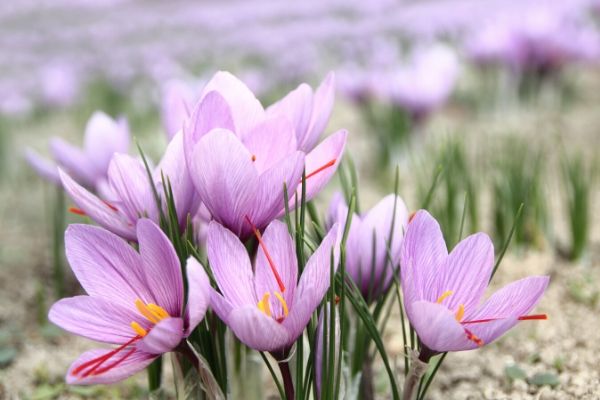
The saffron plants will only be visible for a brief fall growing season, and after a few months, they’ll go dormant again until the following fall. There will be no trace of them whatsoever until that point.
It’s important to carefully mark the location of your saffron bulbs so you don’t accidentally dig them while they’re dormant through the late winter, spring and summer season. Our saffron bulbs are in a purpose-built bed, and it’d devoted to growing saffron so that makes it easy.
Propagating Saffron Bulbs
Saffron naturally multiplies beneath the soil, and new bulbs will develop atop the original bulb. They’ll keep growing up toward the surface until they’re just too shallow to stay healthy year-round. It’s important that they stay deep to weather dry summer conditions or cold winter weather.
Every 4-6 years, dig up the saffron bulbs and break apart the older bulbs from the newly developed bulbs. Replant them all as you originally did, 3-4 inches deep and 3-4 inches apart. This will help avoid overcrowding and keep the saffron growing deep in the soil where it’s protected.
Growing Saffron in Cold Climates
Saffron plants can handle mild frosts and continue growing in the fall. That’s essential here in Vermont where early snows begin right as blooming is just getting started. We’ll have 20 degree nights and snow flurries right in their peak bloom season.
For the most part, that’s not an issue and keeps on producing until the real hard frosts arrive and the ground is blanketed with snow.
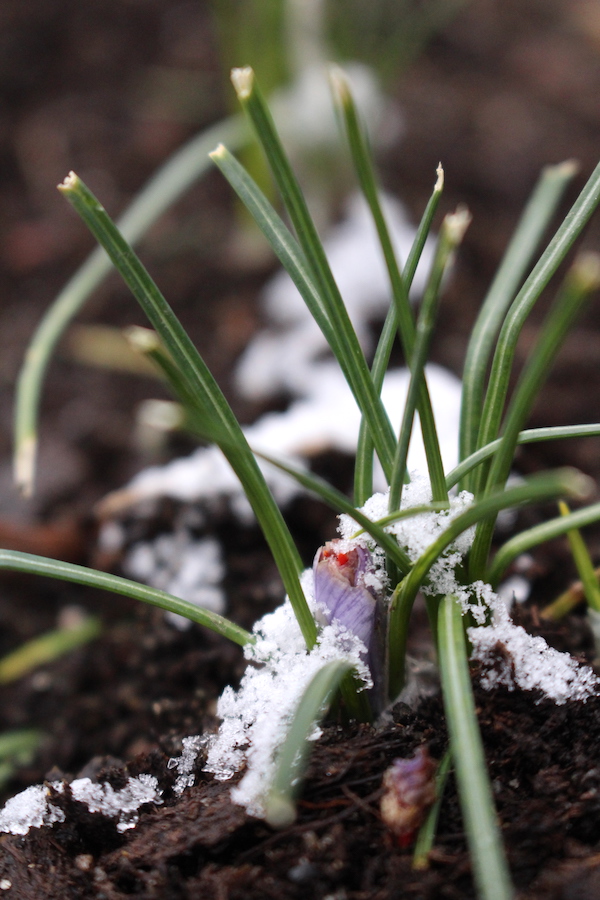
Generally, saffron is considered consistently hardy to zone 6. If you’re in zone 6 or above, there’s no real need to do anything special to grow saffron. Just plant them in the fall, harvest and keep the soil weed-free during their dormant season.
In Zone 5, the saffron bulbs need to be heavily mulched after blooming to help insulate the soil. If properly mulched, saffron bulbs can be overwintered successfully even in zone 5. I put down about a foot of straw mulch over our saffron patch just as the first big snowstorm of the season was starting.
Remove the heavy mulch covering in the spring after the lasts frosts have passed, but don’t water or tend them (other than weeding) until the fall.
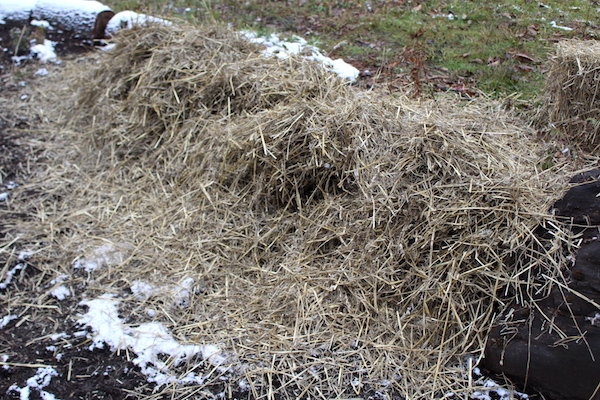
In zones 3 and 4, saffron can be planted in pots and overwintered indoors. Start by planting several bulbs to a pot in the fall, all about 3 inches apart. Bury the pot outdoors in a growing bed, covering the rim by at least 2 inches.
After the saffron bulbs have flowered, it’s important to bring this pot indoors. Wait until the first frosts have passed, but be sure to dig the pots up before the ground actually freezes.
Bring the pots indoors and place them in a cool dry place that’s about 40-50 degrees. DO NOT WATER THEM.
The following spring, re-plant the pots out in the garden again. Wait until after the last frost date, and plant about the same time as your tomatoes.
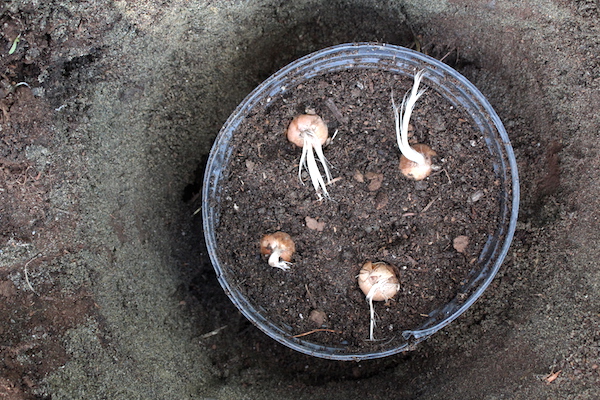
Saffron needs a dry dormant season, so make sure they’re in a well-drained bed and do not water them until the fall. Obviously, some rain will happen during the summer months, that’s fine, just avoid watering them when you water the rest of your garden.
Then in the fall months, the saffron will sprout up tiny grass-like stalks again and the cycle will repeat itself.
Harvesting Saffron
The first year after planting, the bulbs are still getting established and may not produce heavily. Generally, the 2nd and 3rd years crops are the heaviest, and then the bulbs are divided in the 4th year.
In the 2nd and 3rd year, each bulb should produce roughly 6 to 9 flowers, each one with three precious saffron threads.
Generally, the whole flower is plucked in the field and then they’re brought indoors to delicately harvest the threads in a clean, dry environment. Harvest the flowers mid-morning, once the flowers are fully opened and any morning dew has dried.
Bring them indoors and then pluck out the saffron threads from each blossom.
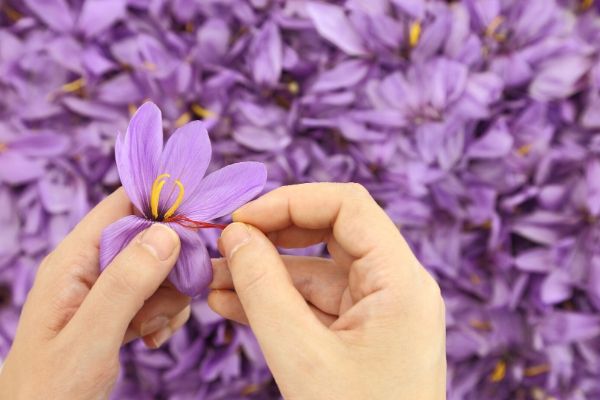
Saffron needs to be dried immediately to prevent spoilage, but since the threads are so small, they readily dry in a few hours in the sun. Place the fresh saffron threads in a warm, dry, well-ventilated sunny space for a few hours and they’ll naturally dry on their own.
Once completely dry, store saffron in an airtight container.
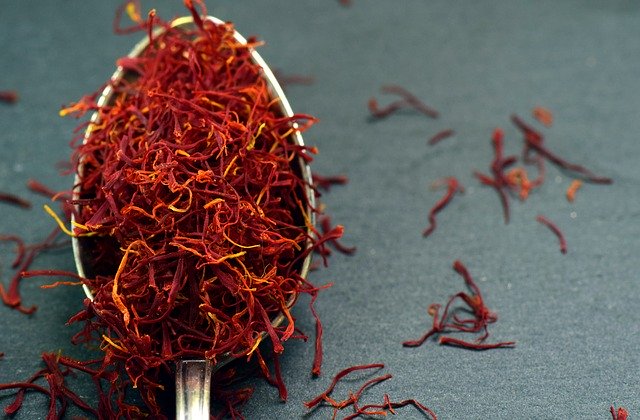
How to Use Saffron
Once you have your own homegrown saffron, you’ll be amazed at the difference freshness can make. Some of that difference is more than just freshness…
Since saffron is so expensive, it’s commonly the victim of food fraud. Corn silk is cut, dried and died bright red and then sold as saffron. You might be convinced that your “saffron” is just old and the flavor is lost, or perhaps you’ve never even tasted real saffron in your life…just the imposters.
Once you’ve learned how to grow saffron and you’re growing it in your own garden, you’ll be sure that every thread that goes into your cooking is the real thing.
Saffron is common in middle eastern cooking, but it’s also quite popular in European and Nordic countries thanks to the spice trade. Historically it was reserved for special occasions like Christmas, and there are still many celebration treats that just aren’t complete without it.
Saveur has an unbelievable collection of recipes using saffron from around the world, and now that I have the real thing in my hands I’m going to work my way through it!
More Unique Homegrown Edibles
All of these tasty crops are (or have been) grown on our zone 4 permaculture homestead…
- 30+ Perennial Vegetables We Grow on our Permaculture Homestead
- How to Grow Ginger
- How to Grow Lemongrass
- How to Grow Cacao Trees (Chocolate Trees)

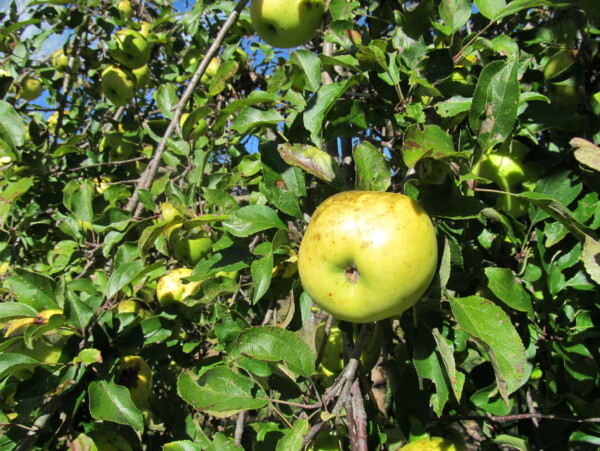













Is one type of crocus better for producing saffron than others??
Thank you
Saffron crocus is completely different than most spring crocus. It shares the same name, but it’s a different plant and blooms in the autumn. You need to buy a saffron crocus specifically from a company selling it for saffron production. Here in the US, I’ve never seen labeled varieties for them past “saffron crocus,” though I imagine there are varieties where it’s traditionally grown en-masse.
This article was very helpful and it answered my questions as to growing saffron.
I’m in zone 5b NW Indiana and was debating whether to leave out or bring in.
I will leave out and heavily mulch.
That’s what we do here, and it does just fine. Best of luck !
I got some saffron crocus from a reputable online seller and they grow great in my climate. BUT they don’t have a very strong saffron taste. It’s disappointing. Is there anything I can do, or anything I can feed them to enhance the taste, or should I just start over with a more potent variety? Thank you!
Interesting…sometimes the flavor comes from the growing conditions, and it may not be the variety. Hot peppers, for example, taste completely different based on where they’re grown even when it’s the same variety. I’m not sure if a new variety will help, but it’s worth a try. I don’t know either way.
Thank you so much this article was clear and inclusive! I appreciate the way you explained everything in a rounded way!
You’re very welcome. We’re so glad it was helpful.
Do you have any advice for late-received bulbs? I ordered early in the summer and just received my saffron bulbs in the mail. It’s the end of October and the first frost in my county (zone 5) is forecasted as two days away! Do I plant my bulbs indoors and water them like a house plant for the winter? Do I try to keep them dormant and put them in a cool dry place for the winter? Any suggestions would be helpful. Thank you!
That’s odd. Most companies will ship it to you when it’s the appropriate time to plant. Where did you order them from?
We ordered them from a small local seed place down the road called superseeds. Now that the bulbs are here (and some of them look like they are sprouting in the package) what would you recommend I do with them for the winter? Ground is not quite frozen solid yet but we are consistently below freezing and have snow already. Do I grow them indoors for the winter and then plant outside?
Yes, that’s probably what I would do.
Hi, Excellent helpful article. I am also an off grid homesteader (small farm in Spain). I have a few corms to plant now, but can I ask when will it be too late to plant more this year? Many thanks and best wishes, Anthony
You want to plant them at least 6 weeks before the last chance of frost.
Some of the prices on Amazon are suspicious. But they are very reasonable at Hudson Valley Seed Company. (I have no affiliation – just saw them for sale on their website.). Thanks for the cold-climate instructions!
You definitely have to be careful on Amazon and make sure that you’re dealing with a reputable seller.
More because it only was vailable in Amazon but I most admit that it was far cheaper AND RELIABLE. I am thinking that difficulties to find it available in North America is giving a chance to those “not reliable”
Today I am more trying to learn how to manage the “dormant season” I once saw a UK Company that was putting its bulbs in a dark warehouse. Not sure how and why they did this
That’s for sure! I’ve been burned once or twice! Fortunately, if you stay on top of it, the return policy helps with many of these issues, but with seeds or bulbs, 30 days isn’t enough.
Yes, that’s so true.
And yet at least for me, worth the risk. when happens I order just a few BULBS, if convincing I target the supplier as trust worthy.
I notice many write about US, best suppliers in quality AND price are in Europe. Only constraint is about quantities and border papers.
I ordered potatoes from Hudson Valley Seed Company and they shipped them to me very late. I would not order from them again. I ordered early in the season and they shipped them two me almost two months after I purchased them with no excuse.
I would look for a seller on Etsy or Ebay or order from a more reliable company like Eden Brothers, Holland Bulb or Sow True Seed.
My name is Khalil Mirza, and I’m the CEO/Co-Founder of Saffrosystems LLC where we have a mission to empower farmers to sustainably produce saffron for a growing world population in an ever-changing climate.
Currently, many farmers are incentivized to produce staple crops in monoculture systems that are leading to the destruction of our soils, water, and the health and socioeconomics of many farmers and consumers alike. That is one reason why we believe saffron can be an advantageous crop for many US farmers, of which hundreds are beginning to adopt the spice from coast to coast.
Saffron is a low-input, shoulder, cash-crop that is currently grown on every continent with exception of Antartica. Many independent studies have supported the role that the specialty crop could play in sustainable, regenerative farming. As part of our mission to empower farmers, we decided to start a free, online community for producers to network, learn, and grow their saffron operation together. We already have a hundred-plus growers online, and the app is iOS, Android, and desktop friendly. The link to join is attached below in case anyone would like to check it out, and the local to global saffron conversations.
You can reach me at the number listed below or reply to this email. I look forward to connecting to help advance sustainable crop opportunities for USA farmers.
https://members.saffrosystems.com
Much obliged,
Khalil Z. Mirza – CEO & Co-founder
SAFFROSYSTEMS, LLC
———————————————-
Certified Nutrition Specialist®
MS | Nutrition & Herbal Medicine
BS | Environmental Policy & Psychology
———————————————-
(410) 292-6657 | k.mirza@saffrosystems.com
Website: https://saffrosystems.com/
This is great information. Thanks so much for sharing.
A few weeks after planting pre-sprouted bulbs, the grass has grown to about a foot long and started wilting. I am giving it sun and new sprouts are popping up but all the tall growth is wilting every day and staying down…like tall yard grass is when you don’t cut it. How do I keep it healthy? I water it about every 10 -15 days and it stays in direct sunlight about 5 hours a day (indoors). What do I need to do so that my Saffron won’t wilt? No flowers have grown and it is 3 months old from its first 2 inch sprouts.
Can you tell me which growing zone you are in and what the weather is like there right now?
I’m in zone 5. The weather has been snowy/sunny. They are all planted in a planter indoors. I keep my house about 70 degrees and they sit in a window that has a vent below it. The heat comes on maybe 4 times a day. The sun hits them directly for 3-5 hours every single day except the snowy days.
What kind of soil do you have them in and are you feeding them with anything?
I don’t see my last reply but I’ll tell you again. I am using miracle grow soil. I have an inch of gravel, sand then sand mixed with the miracle grow soil. I did about 70% soil to 30% sand. I wanted them about every 7-10 days with room temperature water. I don’t add any other “plant food” due to the miracle grow soil having “pre mixed soil with plant food”.
It may just be the constant temperature in the house. If you are growing them indoors, you really want to simulate the fluctuation between the cooler temperatures and the warmer temperatures. After flowering they will go into their dormant stage and shouldn’t be watered during this time. Right after planting and during the flowering stage, you want to water every other day but then stop during the dormant stage which is usually through the winter, spring and summer.
To confirm, we start watering 5 to 8 weeks after planing even if we see the green parts breaking the soil right? I bring my saffron indoors so they get 0 water, just trying to figure out when I should start.
Yes, I would still water them.